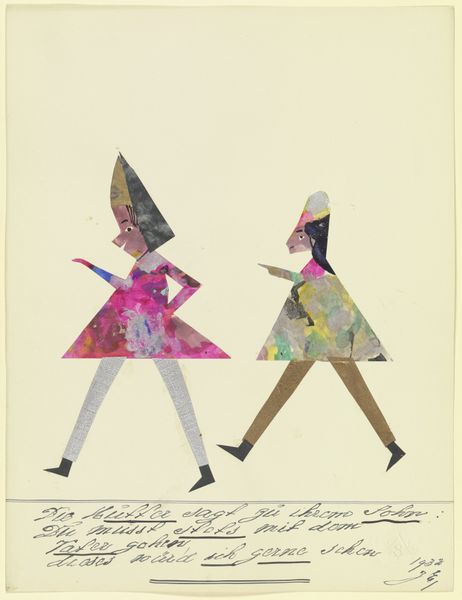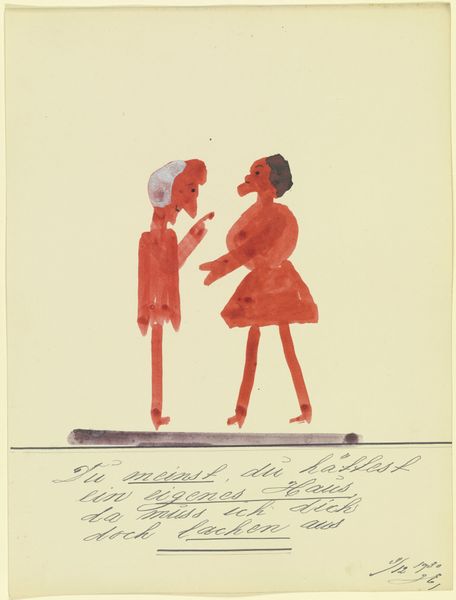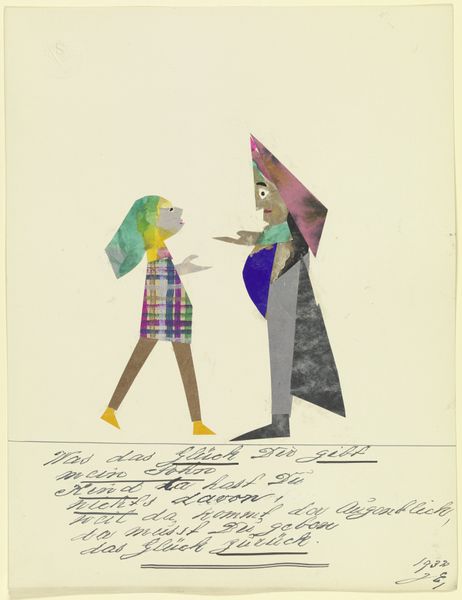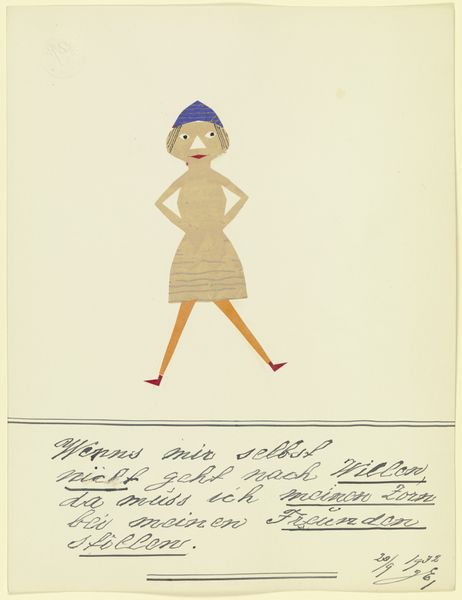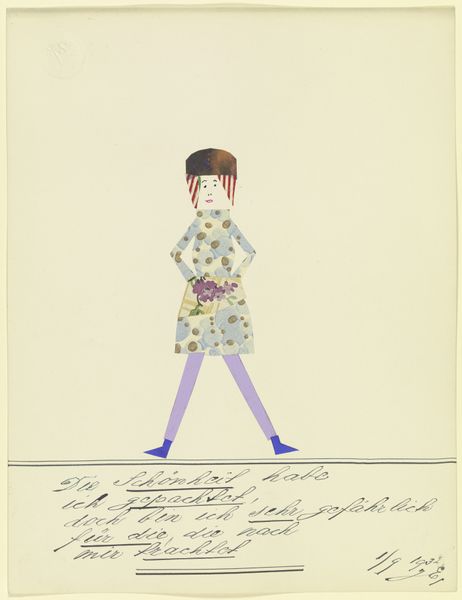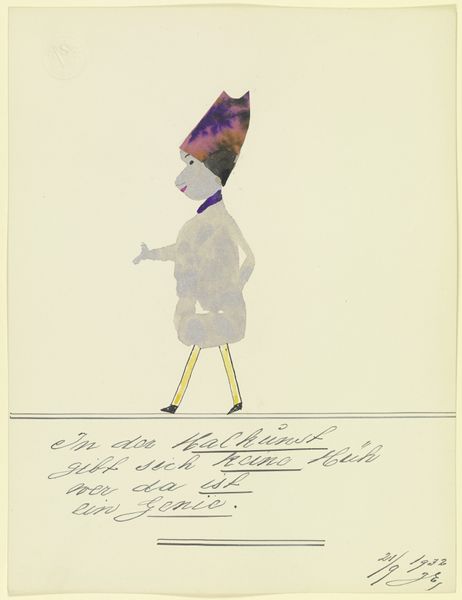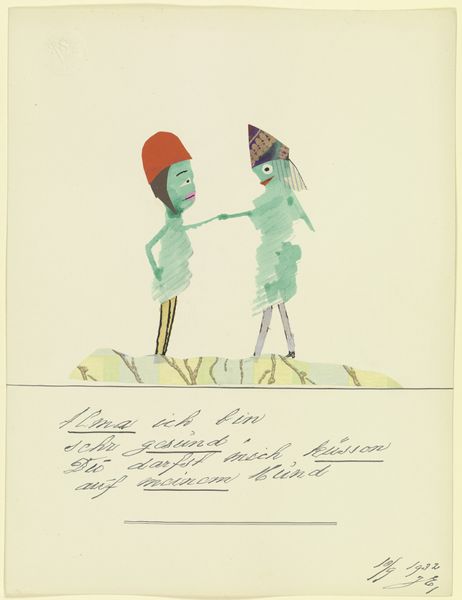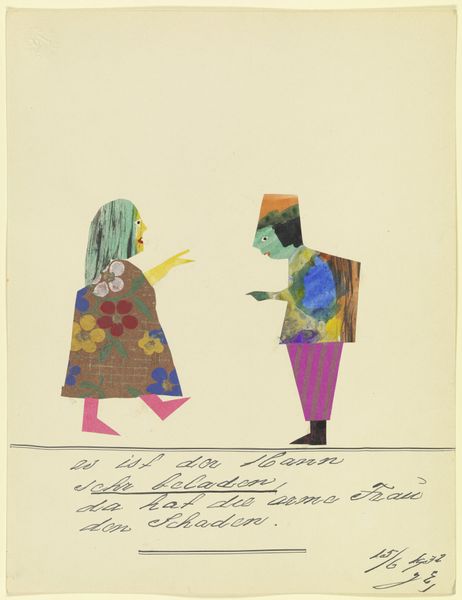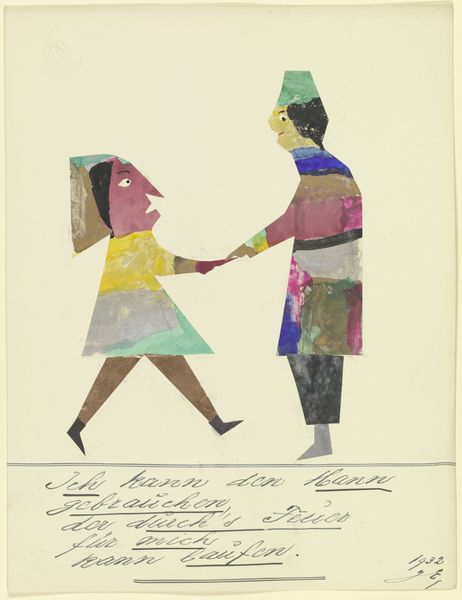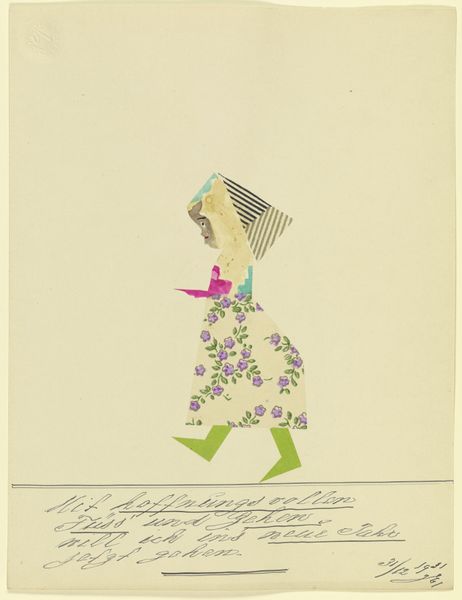
Copyright: Public Domain
Curator: This unusual piece before us is titled "17448 (Hier ist der liebende Bräutigam …)," created in 1932 by John Elsas. It's a striking mixed-media work combining drawing, collage, gouache, and ink on paper. What’s your immediate impression? Editor: I find it… hauntingly peculiar. The figures are so stylized, almost doll-like. The limited palette—mostly browns, pale blues, and white—contributes to a rather somber mood. There’s something unsettling in the flatness and almost crude execution of the work, yet I'm strangely drawn to it. Curator: Elsas created this piece during a time of intense social and political upheaval in Germany, leading up to World War II. As a Jewish artist, his work often reflects themes of displacement, identity, and vulnerability. These figures, seemingly a bride and groom as suggested by the title and inscription below, carry the weight of these anxieties. Consider how traditional notions of marriage and family were being challenged and threatened. Editor: The artist uses color sparingly but purposefully. The blue hat and the flowered headscarf provide small points of visual interest, which create contrast against the plain backdrop and draw your eye in, which could represent the constraints and forced conformity of the period as opposed to true identity. Is there significance to the use of mixed media, specifically collage, that goes beyond practical application? Curator: Absolutely. Collage can be interpreted as a form of fragmentation, mirroring the fractured identities and social structures of the time. The use of found materials and disparate techniques disrupts any sense of wholeness or stability, echoing the artist's own precarious existence as an outsider. Even in something that looks, superficially, like a wedding, you perceive something deeper than pure happiness. The text inscribed under the image makes the meaning a little clearer. Editor: Yes, now, look at how he positions the bride slightly averted with one hand reaching behind in defense as if the action itself or relationship are off balance and unstable; this really enhances that aspect. It speaks volumes. Even formally, Elsas seems to be dismantling the very idea of an image. Curator: By deconstructing conventional representation, Elsas invites us to confront the harsh realities beneath the surface. The innocence one might expect from a wedding portrait is completely subverted, exposing the raw anxieties of a society on the brink of collapse. The lack of any specific context is perhaps even the most profound tool he's using. Editor: Seeing it in this historical and biographical light makes it even more compelling and rather grim. There is real sophistication to what Elsas has achieved. Curator: I agree. The power of art, even in its simplest forms, lies in its ability to make the familiar strange and the unseen visible. This piece continues to resonate as we reckon with its messages today.
Comments
No comments
Be the first to comment and join the conversation on the ultimate creative platform.
